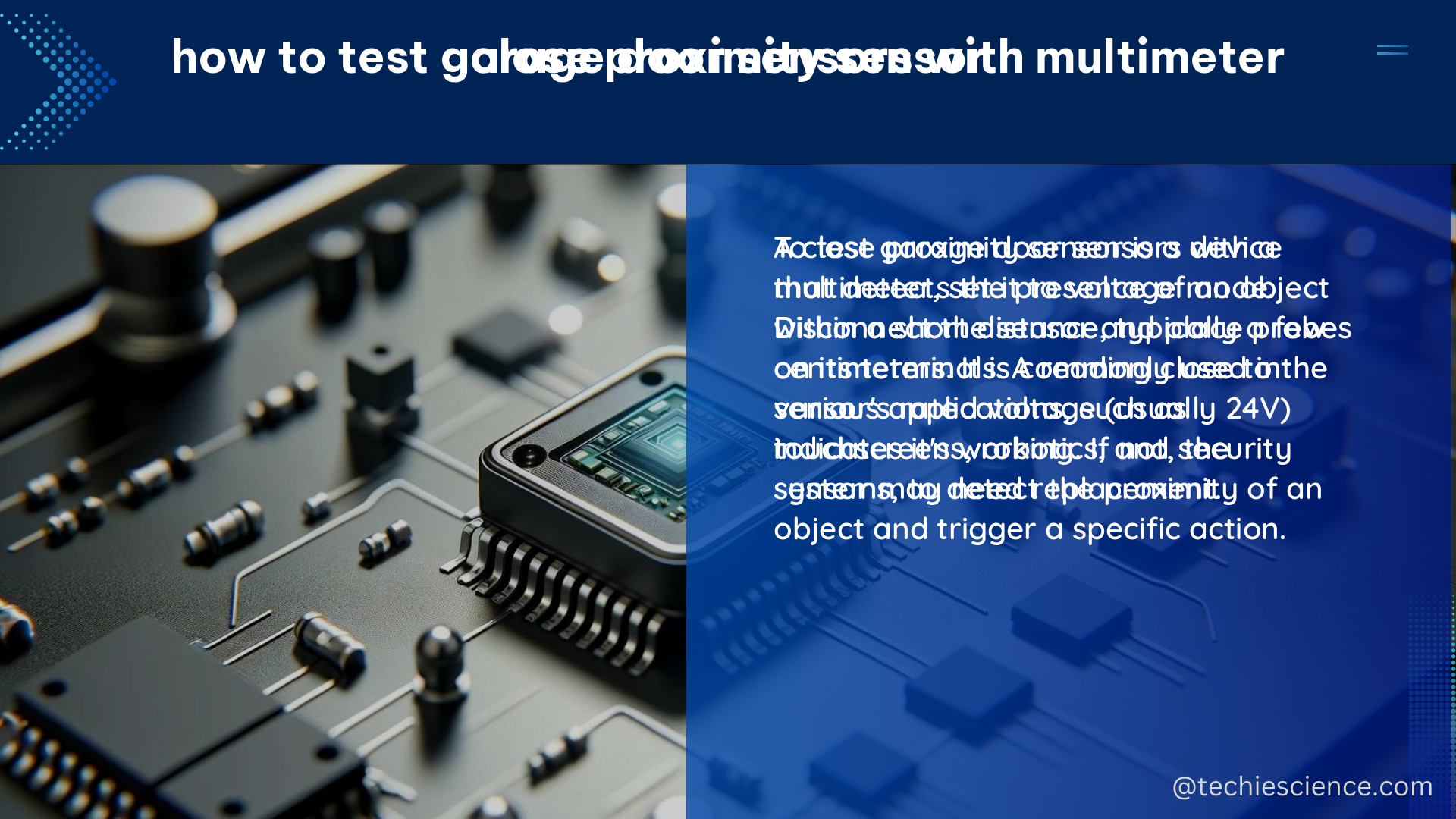Close proximity sensors are versatile devices that can detect the presence or absence of an object or person in close proximity to the sensor. These sensors have a wide range of applications, including intrusion detection systems, human-robot interaction, and bio-electrochemical sensing. In this comprehensive guide, we will dive deep into the technical details of close proximity sensors, their various types, and how you can integrate them into your DIY projects.
Understanding Close Proximity Sensors
Close proximity sensors work by detecting changes in various physical properties, such as capacitance, pressure, or strain, caused by the presence of an object or person in close proximity to the sensor. These sensors can be classified into several types, each with its own unique characteristics and applications.
Capacitance Sensors
Capacitance sensors are one of the most common types of close proximity sensors. They work by measuring changes in the electrical capacitance of the sensor caused by the presence of an object or person. These sensors can have a sensing range of up to several meters and a sensitivity of a few picofarads per millimeter.
For example, a capacitance sensor can be used in an intrusion detection system to detect the presence of a person or object by measuring changes in the sensor’s capacitance. The sensor can be placed near a door or window, and when a person or object enters the detection area, the change in capacitance triggers an alarm.
Pressure Mat Intrusion Detection Sensors
Pressure mat intrusion detection sensors work by detecting the presence of a person or object by measuring the pressure applied to the mat. These sensors typically have a sensing range of a few centimeters and a sensitivity of a few grams per square centimeter.
These sensors can be used in a variety of applications, such as home security systems, where they can be placed at the entrance of a building or on stairs to detect the presence of an intruder.
Strain Sensors
Strain sensors work by measuring the strain or deformation caused by the presence of an object or person. These sensors can have a sensing range of a few millimeters and a sensitivity of a few microstrains.
For example, a strain sensor can be used in a DIY fitness tracker to detect the presence of a person on stairs or a treadmill by measuring the strain caused by the person’s weight.
Technical Specifications of Close Proximity Sensors

Close proximity sensors can vary widely in their technical specifications, depending on the application and the specific sensor type. Here are some key technical specifications to consider:
| Specification | Capacitance Sensor | Pressure Mat Sensor | Strain Sensor |
|---|---|---|---|
| Sensing Range | Up to several meters | A few centimeters | A few millimeters |
| Sensitivity | A few picofarads per millimeter | A few grams per square centimeter | A few microstrains |
| Accuracy | High | Moderate | High |
| Response Time | Fast | Moderate | Fast |
It’s important to note that these are just general ranges, and the actual specifications of a particular sensor may vary depending on the manufacturer and the specific model.
Integrating Close Proximity Sensors into DIY Projects
Close proximity sensors can be easily integrated into a variety of DIY projects, thanks to their versatility and the availability of affordable and easy-to-use sensor modules.
For example, you can use a capacitance sensor to create a DIY intrusion detection system by connecting the sensor to a microcontroller, such as an Arduino or Raspberry Pi, and programming it to trigger an alarm when a person or object enters the detection area.
Similarly, you can use a pressure mat intrusion detection sensor to create a DIY home security system by placing the sensor at the entrance of a building or on stairs, and connecting it to a microcontroller to trigger an alarm when someone enters the detection area.
Strain sensors can be used to create a DIY fitness tracker by placing the sensor on a treadmill or stairs and using it to detect the presence and movement of a person, which can be used to track their activity and fitness levels.
Conclusion
Close proximity sensors are versatile and powerful devices that can be used in a wide range of applications, from intrusion detection to human-robot interaction and bio-electrochemical sensing. By understanding the technical specifications and integration methods of these sensors, DIY enthusiasts can create a variety of innovative and practical projects.
Whether you’re interested in building a home security system, a fitness tracker, or any other project that requires the detection of objects or people in close proximity, this guide has provided you with the necessary information to get started.
References:
- NUREG-1959 “Intrusion Detection Systems and Subsystems”, Nuclear Regulatory Commission, https://www.nrc.gov/docs/ML1111/ML11112A009.pdf
- “Sensing and Sensor Fundamentals”, SpringerLink, https://link.springer.com/chapter/10.1007/978-1-4302-6014-1_2
- “Fundamentals of bio-electrochemical sensing”, ScienceDirect, https://www.sciencedirect.com/science/article/pii/S266682112300073X
- “Capacitive Sensing Fundamentals”, Analog Devices, https://www.analog.com/en/technical-articles/capacitive-sensing-fundamentals.html
- “Pressure Sensor Fundamentals”, Honeywell, https://sensing.honeywell.com/pressure-sensor-fundamentals
- “Strain Gauge Fundamentals”, HBM, https://www.hbm.com/en/2699/strain-gauge-fundamentals/

The lambdageeks.com Core SME Team is a group of experienced subject matter experts from diverse scientific and technical fields including Physics, Chemistry, Technology,Electronics & Electrical Engineering, Automotive, Mechanical Engineering. Our team collaborates to create high-quality, well-researched articles on a wide range of science and technology topics for the lambdageeks.com website.
All Our Senior SME are having more than 7 Years of experience in the respective fields . They are either Working Industry Professionals or assocaited With different Universities. Refer Our Authors Page to get to know About our Core SMEs.